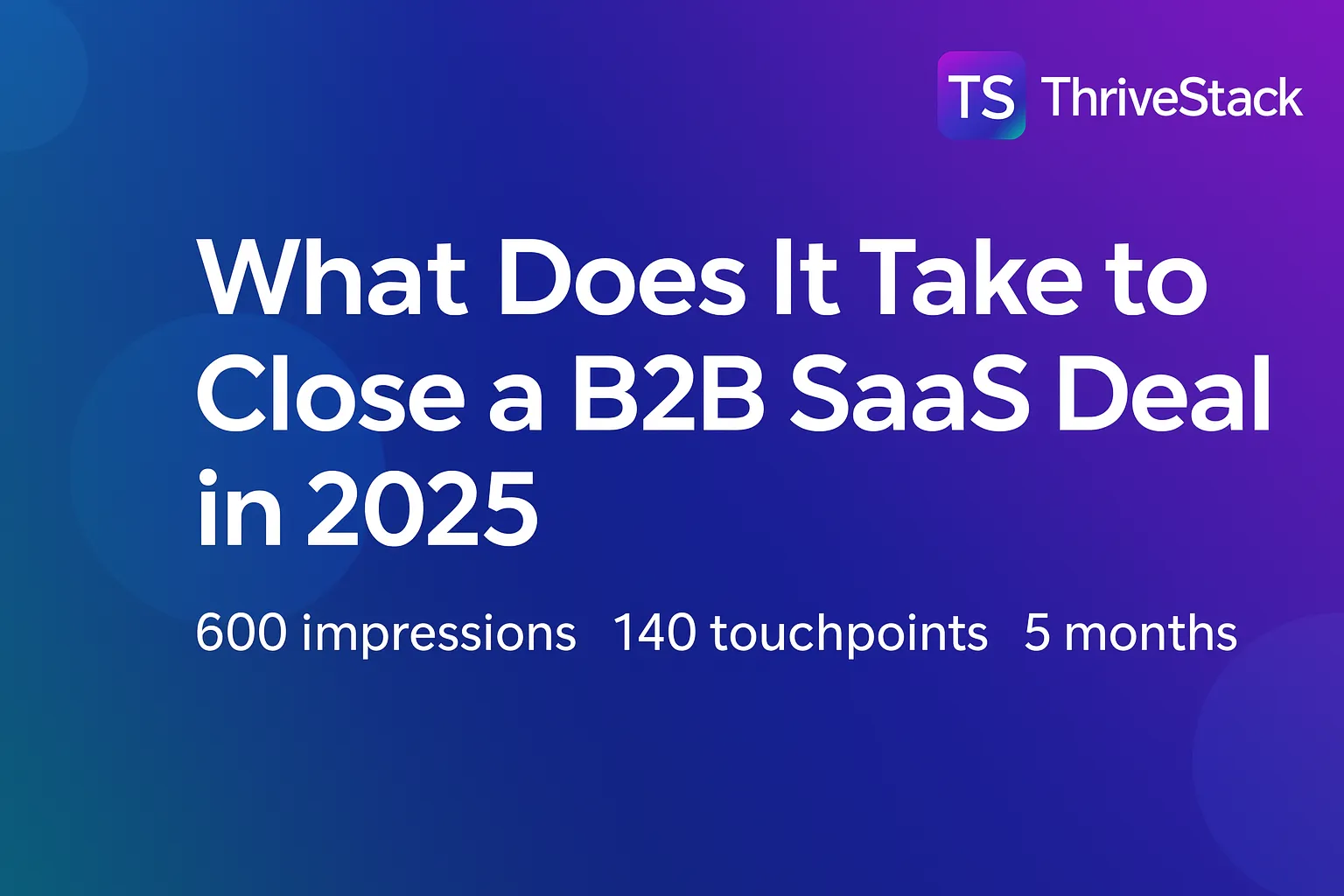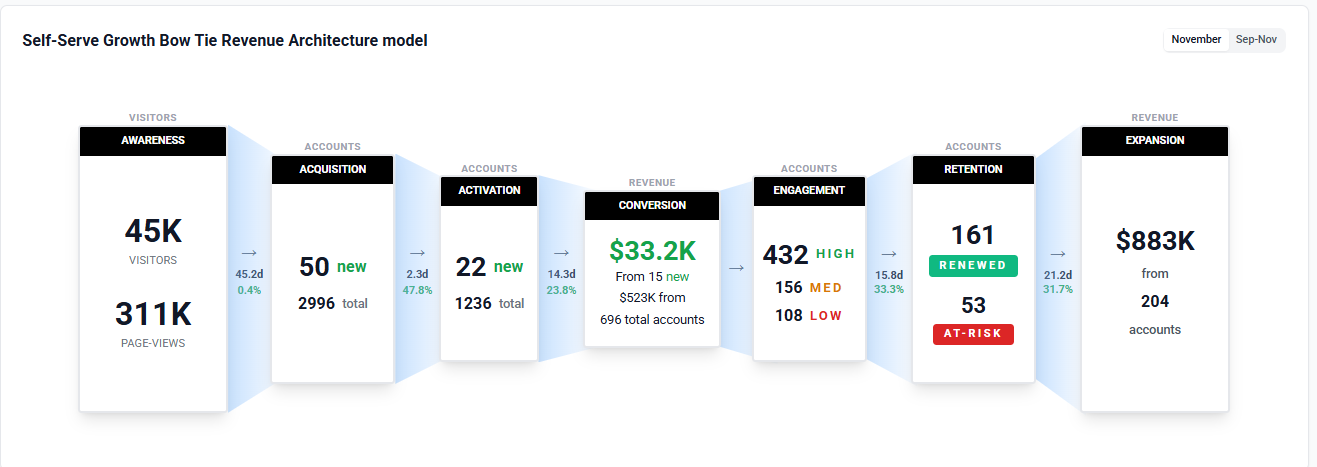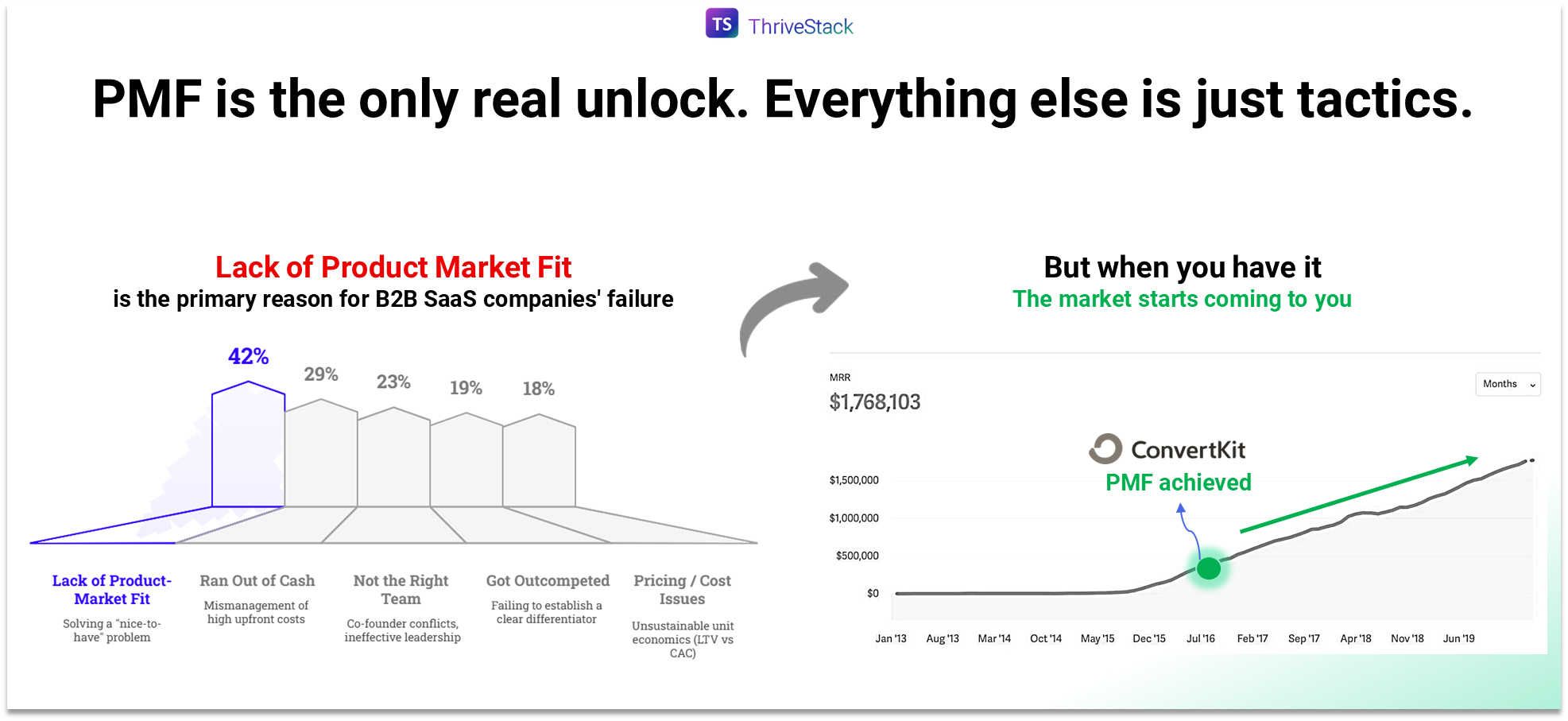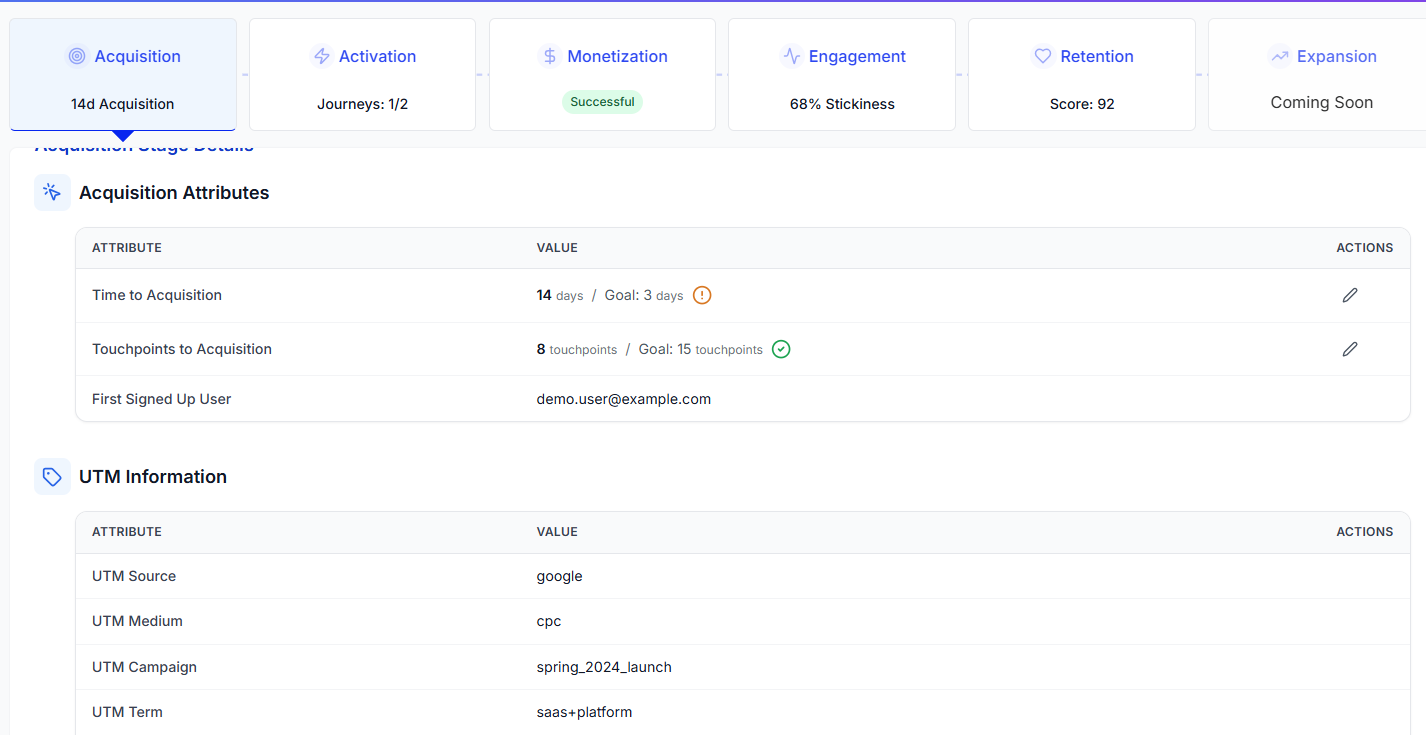B2B SaaS Deal Closure Benchmarks by ACV Tier (2020–2025)
Closing a B2B SaaS deal has always been a blend of art, science, and persistence. However, let's look at what the data says and learn from it. This article outlines benchmark data across key metrics—sales cycle duration, number of impressions, and human touchpoints—segmented by annual contract value (ACV). We’ve integrated insights from 2020 to 2025, focusing on U.S. and European markets, and backed them with the latest research, including exclusive analysis from HockeyStack, SaaStr, and HubSpot
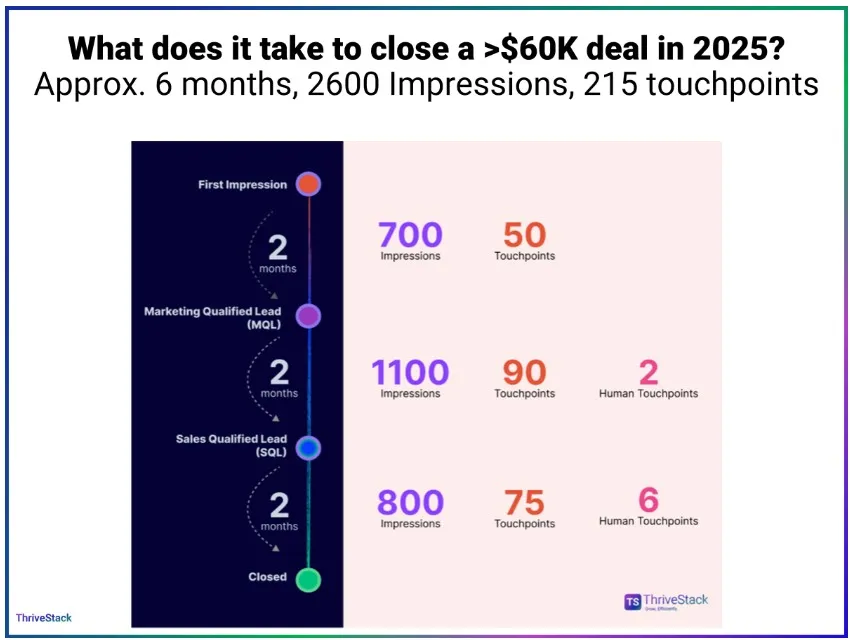
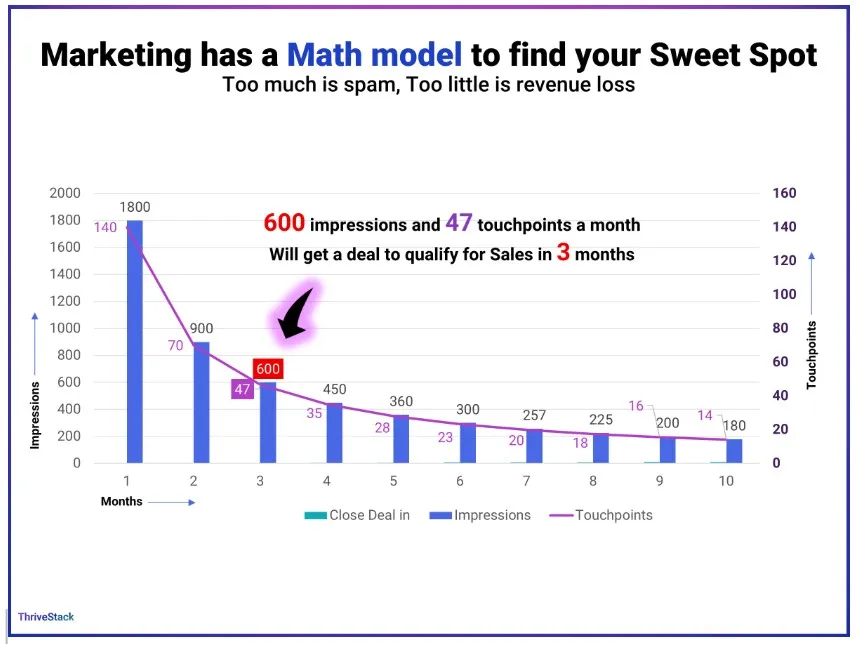
Sales-Led Growth: From First Touch to Deal Closure
Sales Cycle Duration by ACV Tier
(Source: SaaStr, HubSpot)
Marketing Impressions and Touchpoints
(Sources: HockeyStack, GTM Partners)
Many SaaS companies lose up to 30% of top-funnel leads to fake signup leaks — a common issue when measuring impressions and early engagement.
Human Engagement: Calls, Demos, and Meetings
(Source: Gartner B2B Buying Journey, McKinsey B2B Pulse)
Conversion Rates: MQL to SQL to Closed Deal
- MQL to SQL: ~35–45% (HubSpot Benchmarks)
- SQL to Closed Won: ~20–25%
Product-Led Growth: From First Touch to Expansion
Time to Value and Activation Rates
- Time to Value (TTV): 1–7 days (Mixpanel)
- Activation Rate: 25–40%
One of the biggest blockers to early retention is activation exit leaks—when users sign up but never reach value moments. Tracking this metric helps identify where onboarding fails.
Product Engagement Metrics
- Stickiness (DAU/MAU): >20%
- Conversion from first session: Often within 7–14 days
(Source: OpenView PLG Benchmarks)
Conversion Rates from Signup to Paid User
- Freemium to Paid: ~5–10%
- Free Trial to Paid: ~15–25%
(Source: Maxio SaaS Benchmarks)
Expansion Metrics: Upsells and Net Revenue Retention (NRR)
- NRR Benchmark: 110–135% (OpenView)
Companies with strong NRR often monitor GRR decline leaks early—before churn erodes SaaS momentum and upsell opportunities.
Comparative Analysis: Sales-Led vs. Product-Led Metrics
How to Measure the Three Core Metrics Effectively
Understanding benchmarks is only half the battle—measuring them consistently and accurately is where the real leverage lies. In 2025, high-growth SaaS teams rely on advanced tools like ThriveStack to monitor and optimise their Sales-Led and Product-Led efforts across three core areas:
1. Time to Conversion
What to Measure:
- Sales-Led: Time from first touchpoint to MQL → SQL → Closed-Won
- PLG: Time from first website visit to signup → activation → paid conversion
How to Measure Using ThriveStack:
- Use timeline reporting to track individual user journeys
- Customise dashboards by ACV segment and journey phase
- Automate alerts when prospects stall at a funnel stage

Tracking Core Metrics from Awareness to Conversion

2. Marketing Impressions and Touchpoints
What to Measure:
- Total impressions before first engagement
- Channel-specific engagement (LinkedIn, Email, Organic Search, etc.)
- Content interactions per MQL/SQL
How to Measure Using ThriveStack:
- Connect your marketing Website and other channel tools to track multi-channel touchpoints
- Visualize buyer journeys across first-party and third-party platforms
- Segment by persona or funnel stage to assess fatigue or gaps
ThriveStack Multi-Channel Attribution View
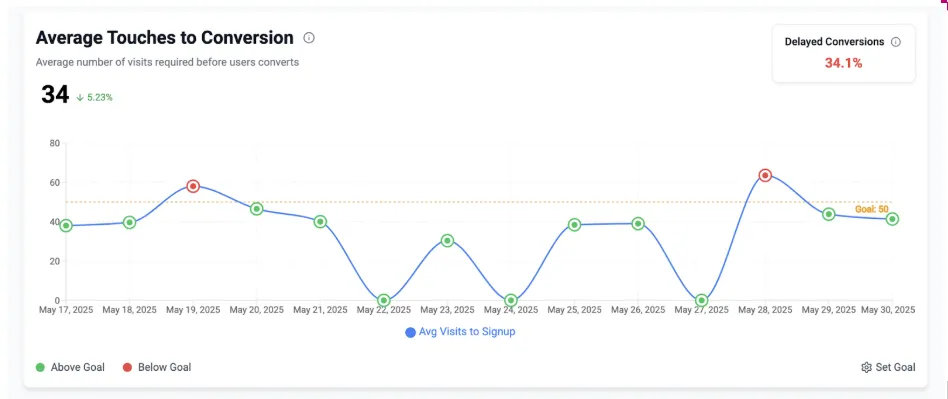
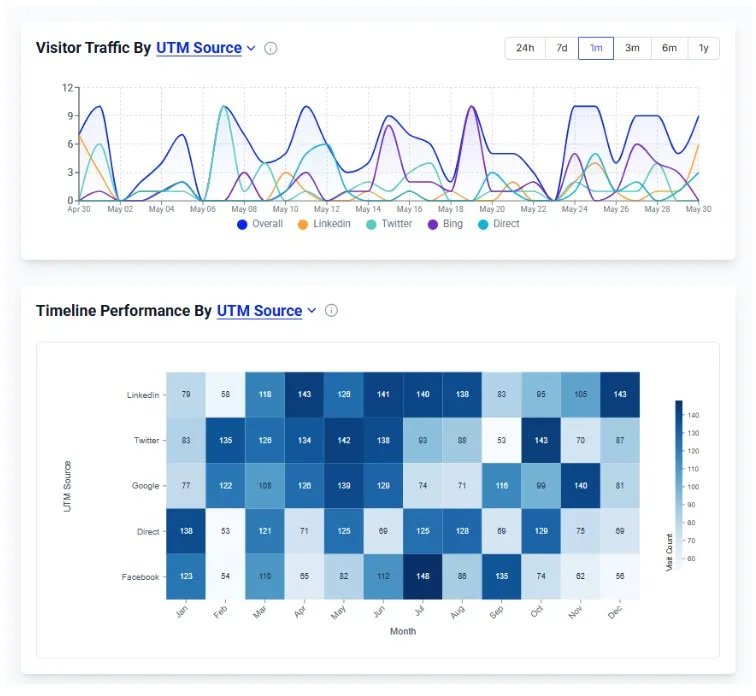
3. Human and Product Touchpoints
What to Measure:
- Sales-Led: Calls, demos, follow-ups logged by rep
- PLG: In-app feature usage, help docs accessed, support pings
- Post-signup: Time to value and activation checkpoints
How to Measure Using ThriveStack:
- Sync CRM data interaction tracking
- Use product event analytics for In-App / PLG touchpoints
- Score users based on engagement patterns and velocity
Even after activation, many accounts silently churn due to low-intensity usage leaks—a signal that product adoption and engagement cadence need attention.
Visual: ThriveStack Activation and Product Engagement
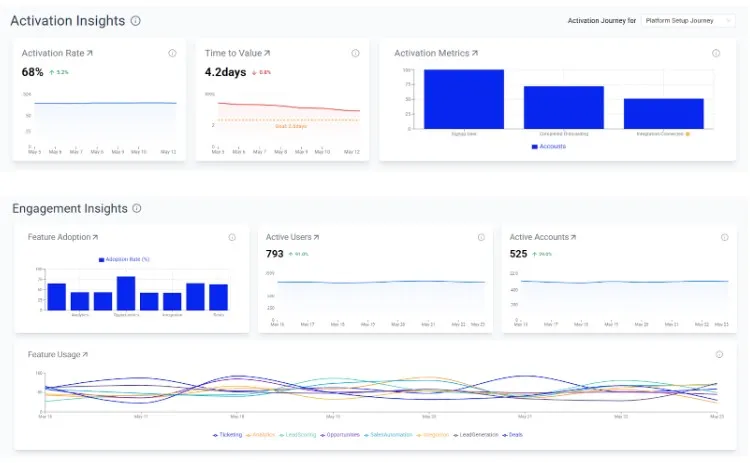
Why ThriveStack?
ThriveStack excels at bridging the visibility gap between marketing, product, and sales data. It offers:
- Unified Growth analytics
- Growth Leak Detection Engine
- Real-time Alerts and Actions
If you're looking to tighten your GTM motion and optimise deal velocity across both models, ThriveStack is a powerful ally.
Strategic Implications for SaaS Teams in 2025
- Match your GTM model to product complexity and market.
- Combine PLG efficiency with Sales-Led depth for hybrid success.
- Track metrics religiously to reduce friction and accelerate growth.
Tools that help:
- CRM tools like Salesforce for the Sales pipeline.
- PLG CRM Tools like ThriveStack CRM for a Self-Serve pipeline.
- ThriveStack for Unified Growth Analytics (from first touch to loyal customer)
To dive deeper into how activation design directly impacts retention, read our SaaS activation journey guide—it breaks down how optimizing early user milestones reduces churn risk.
Conclusion
Closing SaaS deals in 2025 demands agility, data, and model alignment. Sales-led strategies remain essential for big-ticket deals, but PLG opens the door for velocity and scale. Combining both is not just smart—it’s the blueprint for future-proof growth.Unlock Hybrid Growth: Combine Sales-Led and PLG with ThriveStack Start Now
FAQs
1. How long does it take to close a B2B SaaS deal in 2025?
~75–180 days depending on ACV and sales model (SaaStr)
2. How many impressions are needed to convert a lead
600–950 in Sales-Led, 400–800 in PLG (HockeyStack, GTM Partners)
3. What’s the signup-to-paid conversion in PLG?
5–25% depending on model (Maxio)
4. Is PLG more cost-effective than Sales-Led?
Yes, lower CAC and faster time-to-revenue
5. Can companies use both PLG and Sales-Led models?
Yes, hybrid GTM models are increasingly common and effective


